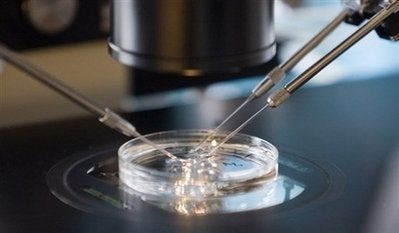
If it's a good idea for a racehorse, then you can bet it's probably a great idea for humans.
A recent article by Tracy Gantz posted on Bloodhorse.com reported that researchers are now recommending that owners and breeders of thoroughbreds consider banking the umbilical cord stem cells from prize race horses.
The new field of regenerative medicine in humans is also creating a new field in veterinary medicine. Regenerative medicine uses the body's own stem cells to help repair and replace damaged tissue, as has been done with people with heart attacks. Likewise, these stem cells may give prize racehorses an opportunity to treat health problems or injuries later in life.
In humans, there are clinical trials going on right now where children with cerebral palsy and brain injury are being given their own newborn stem cells from their umbilical cord to treat their brain damage. Early results are promising and have led to many more families seeking this treatment.
There's also a trial where children with Type 1 diabetes are using their own newborn stem cells from their umbilical cord to help repair their pancreas and produce insulin.
Remember Seabiscuit and Barbaro? These athletes can be crippled or put out to pasture by bowed tendons and torn ligaments. Researchers may now have a way to treat these horses with their own newborn stem cells, without the risk of rejection. Imagine using the horses' own newborn stem cells to help regenerate a new tendon or ligament that is genetically identical to the horse, meaning that there's no risk of rejection.
Newborn stem cells are found in a baby's umbilical cord. These stem cells are different from stem cells ones found in older individuals. Adult stem cells, found in bone marrow and circulating in our blood, are older and a bit more "set in their ways"; they don't have the same ability to change into or differentiate into as many cells as newborn stem cells, who are younger and bit more flexible.
Researchers in veterinary medicine are now recommending that owners and breeders of racehorses consider collecting the newborn stem cells in the horse's umbilical cord at the time of foaling, much the same way that Ob/Gyn physicians make this recommendation to human moms. That way, if a horse injures itself in training or racing, the cells will be available as research progresses and can be available to treat the problem.
"This is a very exciting new area of medicine," said UC Davis's Dr. Ferraro. "It's the first area of medicine in generations that's not based on drugs. We're talking about biological medicine, not pharmacological therapy. That's why the potential is so great."
In my practice with pregnant couples, we also talk about the potential that newborn stem cells have for not only treating cancers and leukemias, but also for treating diabetes and brain injury without the risk of rejection.